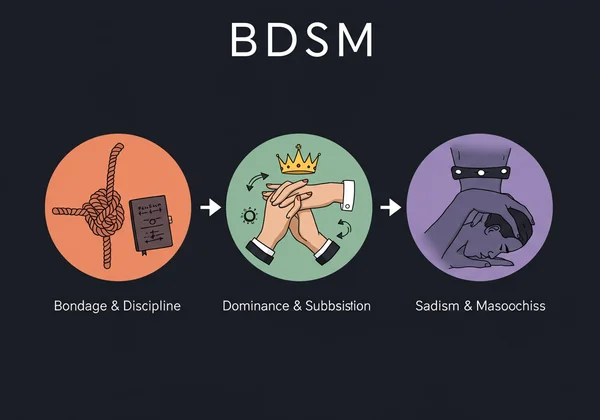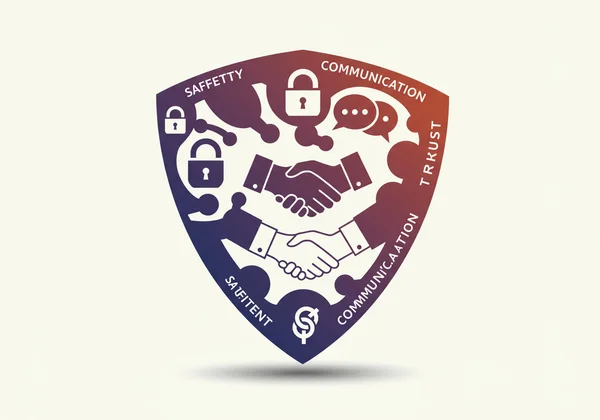What is BDSM? Take Our Free Kink Test & Guide to Safety
Welcome to the world of BDSM – a space often misunderstood, yet rich with potential for self-discovery and profound connection. If you're curious about BDSM, its meaning, or how to safely explore your desires, you've come to the right place. Have you ever wondered what your inner desires truly are? In this ultimate guide, you'll uncover the true meaning of BDSM, understand its core components, learn crucial safety practices, and confidently begin your journey of self-exploration in a judgment-free environment. For a personalized look into your own inclinations, you can always start your journey here.

What is BDSM Meaning? Demystifying the Basics
Before diving into the deeper psychological aspects, it's essential to understand the fundamental building blocks. BDSM is an umbrella term that covers a wide spectrum of erotic and relational expressions. While often sensationalized, its core is built on trust, communication, and consensual power exchange, not harm.
Breaking Down the B.D.S.M. Acronym
The acronym itself represents three main pairings of activities and dynamics, though they often overlap:
-
Bondage & Discipline (B&D): This involves the consensual use of restraints (like ropes, cuffs, or ties) and the establishment of rules and protocols within a scene or relationship. Discipline refers to the enforcement of these rules, often through symbolic actions.
-
Dominance & Submission (D/s): This is a psychological dynamic where one person consensually gives power and control (the submissive) to another (the Dominant). It is a profound exchange of trust that can extend from a short scene to a 24/7 relationship.
-
Sadism & Masochism (S&M): This pairing revolves around giving (sadism) and receiving (masochism) of sensation, which can include pain, but also encompasses intense pleasure, psychological play, and emotional release. It's about the consensual exploration of sensation boundaries.

Kink Explained: Beyond Stereotypes
While BDSM is a large part of the landscape, "kink" is a broader term for any non-conventional sexual or relational interest. Think of BDSM as a major continent on the world map of kink. Kinks can range from specific fetishes (an interest in particular objects, materials, or body parts) to roleplaying scenarios. The key element connecting them all is that they deviate from what is considered "vanilla" or conventional. The beauty of kink lies in its diversity and the freedom it offers for authentic self-expression.
Is BDSM Just About Sex? Exploring Psychological Depth
This is perhaps the biggest misconception. While BDSM can be intensely erotic, for many practitioners, the psychological and emotional components are far more significant than the physical acts themselves. It's about exploring themes of power, vulnerability, trust, control, and surrender in a contained space. Many find it to be a powerful tool for healing, building confidence, and fostering incredibly deep connections with a partner. Understanding this depth is the first step in discovering your own preferences, a process made easier with a comprehensive BDSM quiz.
Safe, Sane, Consensual: The Foundation of Kink Exploration
No exploration of BDSM is complete without a deep dive into its most important principle: safety. The entire framework of healthy kink is built on a foundation of enthusiastic consent and mutual respect. This commitment to safety is what distinguishes BDSM from abuse.
Understanding SSC, RACK, and PRICK: Core Safety Principles
The community has developed several models to guide safe play. The most well-known is:
- SSC (Safe, Sane, and Consensual):
- Safe: All activities should be approached with an awareness of physical and emotional risks, and measures should be taken to mitigate them.
- Sane: All participants should be of sound mind and able to consent clearly.
- Consensual: Everyone involved must give enthusiastic, ongoing, and freely-given permission for every activity.
More modern frameworks like RACK (Risk-Aware Consensual Kink) and PRICK (Personal Responsibility, Informed Consensual Kink) build on this, emphasizing that while no activity is 100% risk-free, participants must understand the potential risks and take personal responsibility for their choices.

The Power of Negotiation and Clear Communication
The most important skill in BDSM is not rope tying or whip throwing—it's communication. Before any play begins, a thorough negotiation is crucial. This is a conversation where all parties discuss their desires, interests, boundaries (hard limits), and things they are hesitant about (soft limits). Using safewords—a pre-agreed word or signal to slow down or stop the action immediately—is a non-negotiable part of this process.
Aftercare: Prioritizing Emotional Well-being in Kink
What happens after a scene is just as important as what happens during it. Aftercare is the process of transitioning back to a normal emotional state. It can involve cuddling, talking, sharing snacks, or simply being present for one another. This practice helps manage the intense emotions and hormonal shifts (like "sub drop" or "dom drop") that can occur, reinforcing the bond of trust and care between partners.
Unpacking BDSM Roles and Dynamics
As you learn more, you may wonder where you fit in. The various roles within BDSM are not rigid boxes but rather fluid archetypes that help people describe their natural tendencies. A great way to begin identifying your potential role is by taking a free BDSM test designed by experts.
Dominants, Submissives, and Power Exchange Explained
This is the most well-known dynamic. A Dominant (Dom) is someone who enjoys taking control, giving direction, and holding power. A submissive (sub) finds pleasure, freedom, or fulfillment in relinquishing that control. This consensual power exchange is a dance built on profound trust, where the submissive holds the ultimate power because they can withdraw their consent at any time.
Sadism, Masochism, and the Play with Sensation
A sadist is someone who derives pleasure from consensually inflicting sensation on another, while a masochist derives pleasure from receiving it. This is not about a desire to cause genuine harm. For many, it’s about the endorphin rush, the mental challenge, and the deep trust required to explore these sensations together.
Switches, Riggers, and Other Diverse Kink Identities
The BDSM world is not a binary. A Switch is someone who enjoys both Dominant and submissive roles, sometimes in the same scene. Other specific roles exist, like Riggers, who specialize in the art of rope bondage, or Littles, who engage in age play dynamics. The possibilities are vast, reflecting the incredible diversity of human desire.
Discovering Your BDSM Role & Compatibility
Figuring out your place on this spectrum is a journey of self-reflection. Are you drawn to leading or following? Do you enjoy giving sensation or receiving it? Answering these questions honestly is key. For those looking for clearer insight, a dominant and submissive quiz can provide a fantastic starting point for understanding your unique profile.

Starting Your BDSM Journey: Resources and Next Steps
Embarking on this path can feel exciting and a little overwhelming. The key is to proceed with curiosity, patience, and a commitment to safety.
How to Safely Explore Your Kinks (A Judgment-Free Path)
The safest way to start is with education and self-reflection. Read books, listen to podcasts from reputable educators, and reflect on your own fantasies. Before engaging with a partner, it's incredibly helpful to understand your own baseline. This is where an online tool like the BDSMTest becomes invaluable. It offers a private, secure, and insightful way to explore your tendencies without any pressure or judgment.
When to Seek Support and Professional Guidance
While self-exploration is powerful, some topics may bring up deeper emotional issues. It is important to remember that online tests and guides are for educational purposes, not as a substitute for professional therapy. If you find that your exploration into kink brings up past trauma or significant distress, seeking guidance from a kink-aware therapist or counselor is a sign of strength.
The Takeaway
Your journey into BDSM is a deeply personal and empowering path of self-discovery. We hope this ultimate guide has provided a clear, comprehensive, and reassuring foundation for understanding the diverse and enriching world of kink. Remember, safety, consent, and communication are your unshakeable pillars. When you're ready to take the next step in understanding yourself, we're here to help.
Ready to take the next step? Begin your journey of self-discovery today. Take our free, expert-designed kink test and uncover your unique preferences in a safe, private, and judgment-free environment.
Frequently Asked Questions About BDSM Basics
What are kinks, and how do they differ from fetishes?
Kinks are a broad term for any non-conventional sexual interest or practice. A fetish is a specific type of kink where sexual arousal is strongly linked to a particular object, material, body part, or situation (e.g., feet, leather, or uniforms). Essentially, all fetishes are kinks, but not all kinks are fetishes.
What does 'safe, sane, and consensual' (SSC) mean in BDSM?
SSC is the foundational ethical framework for BDSM. Safe means taking precautions to prevent physical and emotional harm. Sane means all participants are of sound mind and can make rational decisions. Consensual means everyone has given enthusiastic and ongoing permission for all activities. It’s the community's core commitment to responsible exploration.
How can I discover my own BDSM preferences or role?
Self-discovery is a gradual process involving fantasy exploration, education, and reflection. A highly effective first step is using a structured tool to see where your interests lie. You can discover your BDSM role by taking a confidential and comprehensive online quiz designed to analyze your responses to various scenarios and dynamics.
How do I safely explore BDSM as a beginner?
Start with education. Read, research, and understand the principles of safety and consent. The next step is self-reflection, and a fetish test can be an excellent, private way to do this. When you're ready to engage with a partner, communication is everything. Have an open and honest negotiation about desires and boundaries before you do anything else.